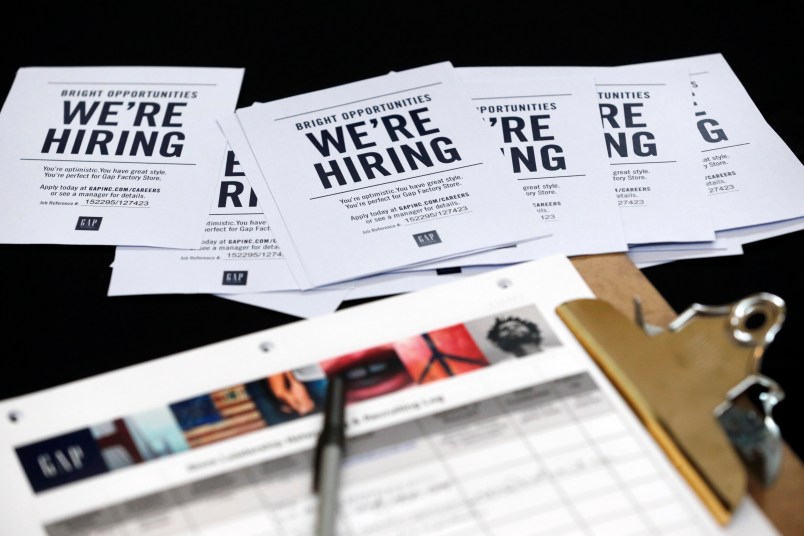WASHINGTON (AP) — U.S. employers added 156,000 jobs in December, capping a year of slower but solid hiring. The report is the last major snapshot of the economy President-elect Donald Trump will inherit from President Barack Obama.
The Labor Department says the unemployment rate ticked up to 4.7 percent from a nine-year low of 4.6 percent.
Hourly pay jumped 2.9 percent from a year earlier, the biggest increase in more than seven years. That is a positive sign that the low unemployment rate is forcing some businesses to offer higher wages to attract and keep workers. Sluggish growth in Americans’ paychecks has been a longstanding weak spot in the seven-year economic recovery.
For all of 2016, job growth averaged 180,000 a month, down from 229,000 in 2015, but enough to lower unemployment over time.
Weak spots remain in the job market: A smaller share of Americans either have a job or are looking for one than before the recession. That is particularly true for men. Many men, especially those without a college education, have suffered as the job market has shifted away from blue collar work such as manufacturing and mining toward industries that either require higher skills, like information technology, or that pay less and are dominated by women, such as health care.
Though the unemployment rate is at a healthy level, the proportion of Americans in their prime working years who are either working or looking for work remains far below its pre-recession level. When people stop looking for a job, they’re no longer counted as unemployed. Those “dropouts” have contributed to a declining unemployment rate over the past eight years.
Trump spotlighted that trend as a shortcoming in Obama’s record and charged during the election campaign that the unemployment rate was a “hoax.” He now faces the steep challenge of bringing back men who have left the workforce.
Since the election, Trump has successfully pressured several manufacturers to keep some jobs in the United States, including Ford and United Technologies’ air conditioning unit Carrier.
In the meantime, the number of factory jobs has continued to decline. Manufacturers are struggling to adapt to a strong dollar and weak overseas growth, which have combined to reduce exports. Factories have cut 54,000 jobs in the past year.
The steady rise in restaurant, hotel and retail jobs has also increased the ranks of part-time workers who would prefer full-time work. Those industries disproportionately hire part-timers.
More than 5.6 million people work part time but want full-time work, a big improvement since the recession. Yet seven years into the recovery, that figure is still well above pre-recession levels of about 4.4 million.
Other recent economic data have been more encouraging. Consumers and small businesses have become more confident since the election, which could lead to increased spending and hiring.
And purchases of costly items like homes and cars have been strong, though they’re threatened by higher interest rates. But if hiring and wage gains continue, they could offset at least some of the depressive effects of higher borrowing costs.
Auto sales rose for a seventh straight year in 2016 to a record high. Industry analysts expect sales to slip a bit this year but to remain at a healthy level.
And home sales reached their highest point in nearly a decade in November. Mortgage rates have jumped since the election but dipped this week, suggesting that rates might level off.
Copyright 2017 The Associated Press. All rights reserved. This material may not be published, broadcast, rewritten or redistributed.



